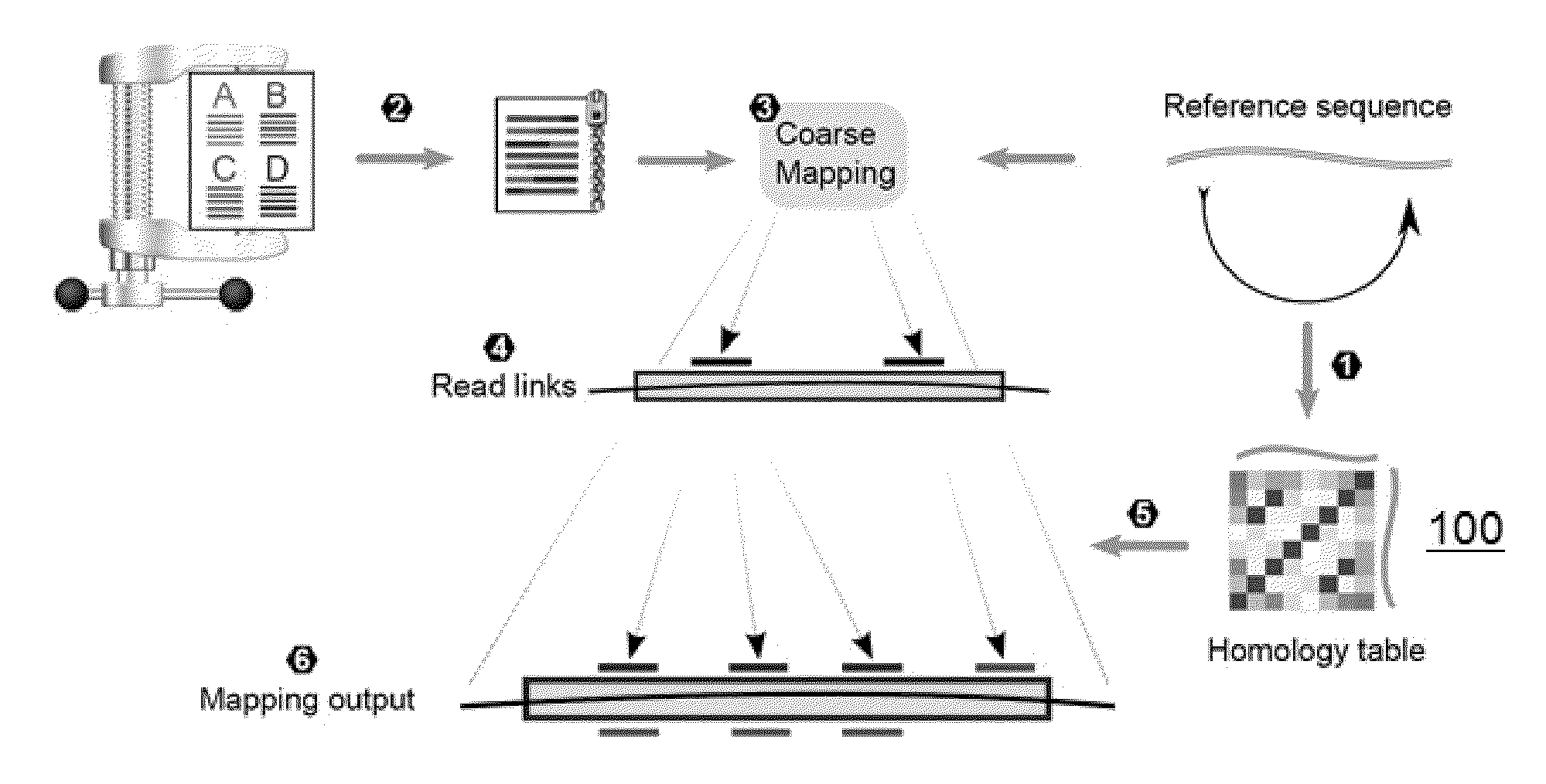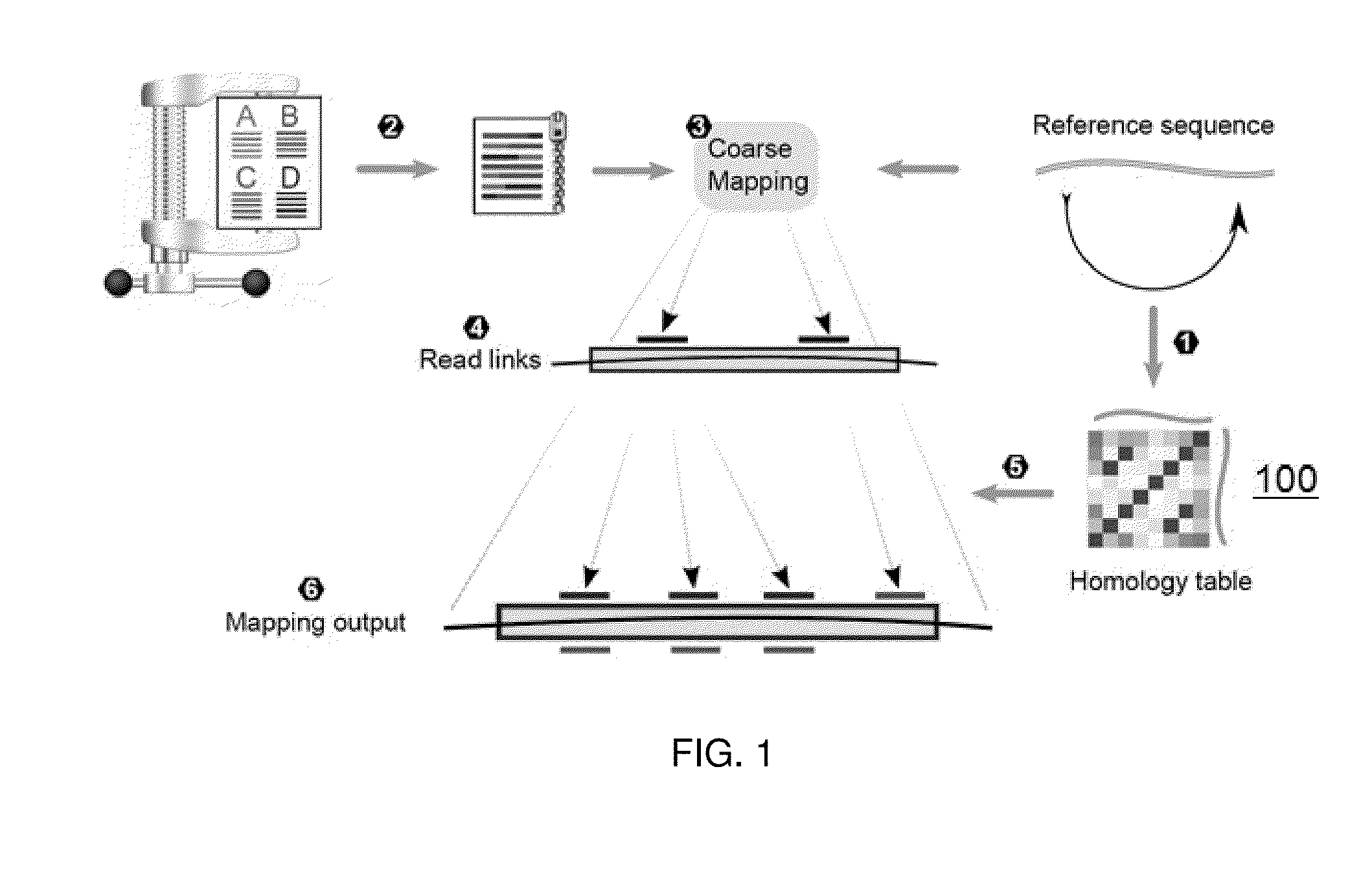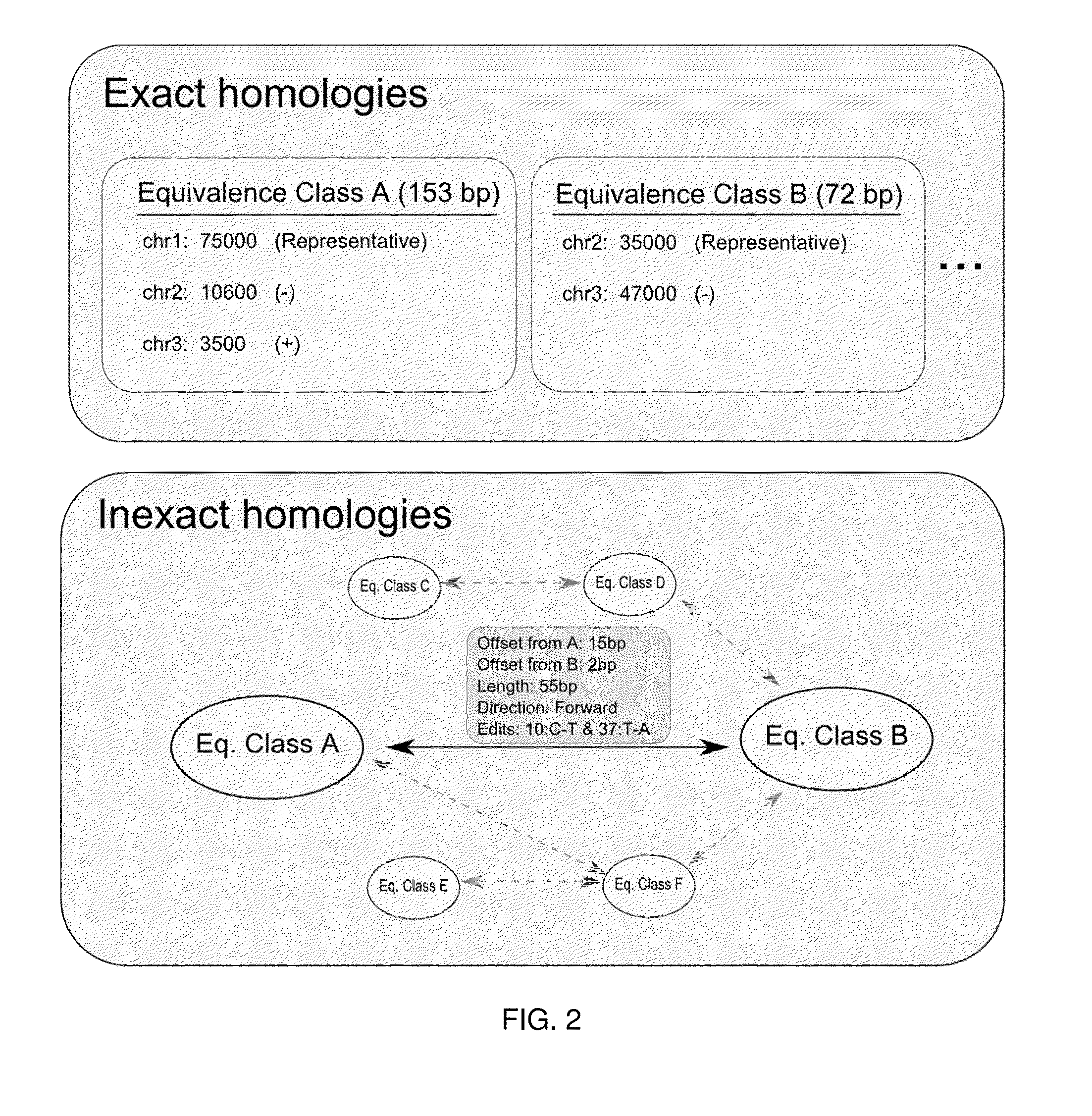Compressively-accelerated read mapping framework for next-generation sequencing
- Summary
- Abstract
- Description
- Claims
- Application Information
AI Technical Summary
Benefits of technology
Problems solved by technology
Method used
Image
Examples
Embodiment Construction
[0018]For descriptive purposes, the framework and technique of this disclosure is referred to as “CORA” (COmpressive Read-mapping Accelerator”), but this nomenclature is not intended to be limiting. Typically, the tool is implemented as computer software executing in one or more hardware processors. The computer software may be implemented as one or more programs, processes, instruction sets, execution threads, scripts, or the like.
[0019]Compressively-accelerated read mapping according to this disclosure addresses the inefficiencies of mapping high-throughput NGS reads by capitalizing on redundancy within both read datasets and the reference. The basic technique is shown in FIG. 1.
[0020]As a preprocessing step (1), a high-resolution homology table 100 is created for the reference sequence 102 by mapping the reference to itself. The homology table preferably contains all homologous pairs of loci in the reference above a similarity threshold, allowing direct access between similar loc...
PUM
 Login to View More
Login to View More Abstract
Description
Claims
Application Information
 Login to View More
Login to View More - R&D
- Intellectual Property
- Life Sciences
- Materials
- Tech Scout
- Unparalleled Data Quality
- Higher Quality Content
- 60% Fewer Hallucinations
Browse by: Latest US Patents, China's latest patents, Technical Efficacy Thesaurus, Application Domain, Technology Topic, Popular Technical Reports.
© 2025 PatSnap. All rights reserved.Legal|Privacy policy|Modern Slavery Act Transparency Statement|Sitemap|About US| Contact US: help@patsnap.com



